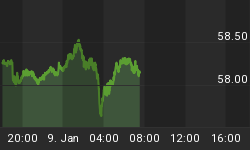
Many have contemplated adjusting their precious metal portfolios in light of the fall of the gold price from $1,900 to the current $1,600+ level. Many gold shares haven't performed as well as the gold price. Why? Will they in the future? Should investors hold just the metal, or will shares now outperform the gold and silver prices? What are the criteria for choosing a share in the precious metals, mining industry? How do I design my own portfolio to suit my investment goals and emotional tolerance?
Each answer will be unique for every investor.
In this the first part of this series we first look at you, the investor. Understanding your own behavior in the extremely volatile times is crucial. After all, it's likely that the world's financial markets have entered a new era of risk. One fund manager put it this way, "The future is not going to be like a past we knew. There's no exit from this morass."
We're looking at an anemic global economy, the systemic European sovereign debt crisis, U.S. unemployment stuck above 9%, and swooning stock markets, which have sapped the euphoria that swept Wall Street in 2009 as it rebounded to record profits after the credit crisis. The benefits of a $700 billion taxpayer bailout and $1.2 trillion in emergency funding from the Federal Reserve have faded. This fund manager believed that the whole capitalist system is being called into question. So, if you want to make money in the future, you have to adjust your entire outlook.
You, the Investor
When any investor is looking to restructure their portfolio, they must first look at themself. An investor's journey is never as simple as he thinks. The investment road is not a new highway, easy and fast to travel on. It's like driving across land with no roads -the unexpected usually happens, so like an off-road driver, investors must be prepared for the different problems they will encounter. How will you handle a sudden reversal of the price to which you thought your investments would go? How do you handle an unexpected interruption in the performance of your investments? When the economic climate changes, are you able to adjust? Was the portfolio constructed for all seasons or just the summer? What are your emotional thresholds? Will you panic if what you planned to happen doesn't, or have you set goals that accommodate major change? This is the starting point in the life of an investor.
Of course, like any driver, you need to know where you're going and why. What are your goals in investing? The long-term professional investors need enough wealth to retire or leave for his heirs. He's driven by the concept of Total Returns. These are the sum total of income, returns, on reinvested income and capital appreciation. Translated, Total Returns is the wealth you've accumulated at the end of your journey. This involves far more than just the investment itself.
Different Types of Investors
The Trader
Many people believe that a person who dives in an out of the market on a daily or weekly basis is an investor, but nothing could be farther from the truth. We feel he's a gambler, investing in his own skills and emotions. The best traders have a success rate of around 52%. The professional weathered trader hopes this will allow him to make more money than he loses and to end up pretty rich. What's not often realized is that The Trader is not investing in a manufacturer, miner, investment house, or any other sector for that matter. The Trader is investing in himself and his ability to buy low and sell high, or short. The Trader is guided almost completely by the charts. Often time, it's heavily stressful and Traders frequently burn out emotionally.
He only consults the Technical picture [the charts]. He has an absolute belief that the charts are the only thing that matters and that all investments follow the ways the charts point. Indeed, he has such confidence that he goes in and out in a day, sometimes. He is a 'day-trader'. He often heightens his risk by leveraging himself in the belief that this will lead to greater profits, but it often increases the losses.
The Investor
A real investor can be one of two types.
- Investors who, again, rely on their abilities to buy low and sell high, with profit in mind. They may hold for the short-, medium- or long-term with the purpose of selling that investment to take profit in cash.
- The second type is one who holds for the long-term with retirement or his children's inheritance in mind. He wants to buy low and leave it be, thereafter.
Each one of us falls into one (or both) of these categories.
It's our experience that the most successful of these types is the long-term investor, who will only sell if a mid-trend correction is coming, so sell with a re-purchase in mind, when he sees his chosen investment creates a floor. This type of investor doesn't simply exit with the profit, but accommodates a mid-trend correction that he sees coming. His belief in the fundamentals persists all the way.
This series is aimed at the Investor, because they want to understand the overall performance and integrity of their investments. In the next part of the series we will look at the broad picture governing investments and certain characteristics that should be looked at before any investor makes a decision.
Member's Only
The Medium-Term Profit Maker
The Long-Term Investor
Get the rest of the report. Subscribe @ www.GoldForecaster.com and www.SilverForecaster.com
















